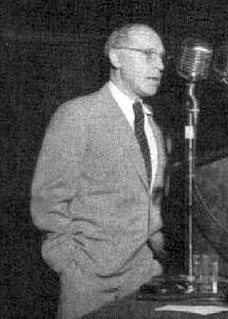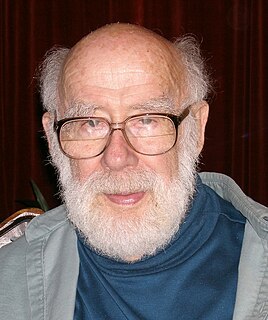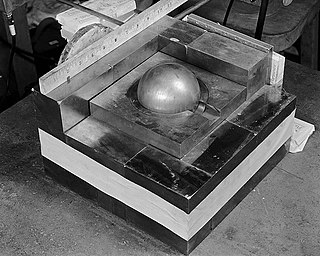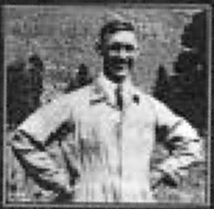Related Research Articles

Homeopathy or homoeopathy is a pseudoscientific system of alternative medicine. It was conceived in 1796 by the German physician Samuel Hahnemann. Its practitioners, called homeopaths, believe that a substance that causes symptoms of a disease in healthy people can cure similar symptoms in sick people; this doctrine is called similia similibus curentur, or "like cures like". Homeopathic preparations are termed remedies and are made using homeopathic dilution. In this process, the selected substance is repeatedly diluted until the final product is chemically indistinguishable from the diluent. Often not even a single molecule of the original substance can be expected to remain in the product. Between each dilution homeopaths may hit and/or shake the product, claiming this makes the diluent remember the original substance after its removal. Practitioners claim that such preparations, upon oral intake, can treat or cure disease.

Toxicology is a scientific discipline, overlapping with biology, chemistry, pharmacology, and medicine, that involves the study of the adverse effects of chemical substances on living organisms and the practice of diagnosing and treating exposures to toxins and toxicants. The relationship between dose and its effects on the exposed organism is of high significance in toxicology. Factors that influence chemical toxicity include the dosage, duration of exposure, route of exposure, species, age, sex, and environment. Toxicologists are experts on poisons and poisoning. There is a movement for evidence-based toxicology as part of the larger movement towards evidence-based practices. Toxicology is currently contributing to the field of cancer research, since some toxins can be used as drugs for killing tumor cells. One prime example of this is ribosome-inactivating proteins, tested in the treatment of leukemia.

Hermann Joseph Muller was an American geneticist, educator, and Nobel laureate best known for his work on the physiological and genetic effects of radiation (mutagenesis), as well as his outspoken political beliefs. Muller frequently warned of long-term dangers of radioactive fallout from nuclear war and nuclear testing, which resulted in greater public scrutiny of these practices.

Hormesis is a characteristic of many biological processes, namely a biphasic or triphasic response to exposure to increasing amounts of a substance or condition. Within the hormetic zone, the biological response to low exposures to toxins and other stressors is generally favorable. The term "hormesis" comes from Greek hórmēsis "rapid motion, eagerness", itself from ancient Greek hormáein "to set in motion, impel, urge on", the same Greek root as the word hormone. The term 'hormetics' has been proposed for the study and science of hormesis.

Louis Alexander Slotin was a Canadian physicist and chemist who took part in the Manhattan Project. Born and raised in the North End of Winnipeg, Manitoba, Slotin earned both his Bachelor of Science and Master of Science degrees from the University of Manitoba, before obtaining his doctorate in physical chemistry at King's College London in 1936. Afterwards, he joined the University of Chicago as a research associate to help design a cyclotron.

The linear no-threshold model (LNT) is a dose-response model used in radiation protection to estimate stochastic health effects such as radiation-induced cancer, genetic mutations and teratogenic effects on the human body due to exposure to ionizing radiation. The model statistically extrapolates effects of radiation from very high doses into very low doses, where no biological effects may be observed. The LNT model lies at a foundation of a postulate that all exposure to ionizing radiation is harmful, regardless of how low the dose is, and that the effect is cumulative over lifetime.

Radiation hormesis is the hypothesis that low doses of ionizing radiation are beneficial, stimulating the activation of repair mechanisms that protect against disease, that are not activated in absence of ionizing radiation. The reserve repair mechanisms are hypothesized to be sufficiently effective when stimulated as to not only cancel the detrimental effects of ionizing radiation but also inhibit disease not related to radiation exposure. This hypothesis has captured the attention of scientists and public alike in recent years.
Arndt–Schulz rule or Schulz' law is a claimed law concerning the effects of pharmaca or poisons in various concentrations. It states that:
For every substance, small doses stimulate, moderate doses inhibit, large doses kill.

John William Gofman was an American scientist and advocate. He was Professor Emeritus of Molecular and Cell Biology at the University of California at Berkeley.
Bernard Leonard Cohen was born in Pittsburgh, and was Professor Emeritus of Physics at the University of Pittsburgh. Professor Cohen was a staunch opponent of the so-called Linear no-threshold model (LNT) which postulates there exists no safe threshold for radiation exposure. His view which has support from a minority. He died in March 2012.
The International Centre for Low Dose Radiation Research (ICLDRR) was established at the University of Ottawa, in 1997, with national and international support. The ICLDRR assembles all published data and conducts analyses concerning the effects of low doses of radiation on humans and in the environment. ICLDRR's main focus is to contribute to clarifying whether low and very low doses of ionizing radiation increase the risk of cancer. To that end, the ICLDRR has assembled and analysed virtually all published data on cancer induction in laboratory animals by low doses of ionizing radiation, and published initial findings at specialized international conferences, since 1998.

Cobalt-60 (60Co) is a synthetic radioactive isotope of cobalt with a half-life of 5.2713 years. It is produced artificially in nuclear reactors. Deliberate industrial production depends on neutron activation of bulk samples of the monoisotopic and mononuclidic cobalt isotope 59
Co
. Measurable quantities are also produced as a by-product of typical nuclear power plant operation and may be detected externally when leaks occur. In the latter case the incidentally produced 60
Co
is largely the result of multiple stages of neutron activation of iron isotopes in the reactor's steel structures via the creation of its 59
Co
precursor. The simplest case of the latter would result from the activation of 58
Fe
. 60
Co
undergoes beta decay to the stable isotope nickel-60. The activated nickel nucleus emits two gamma rays with energies of 1.17 and 1.33 MeV, hence the overall equation of the nuclear reaction is:

The demon core was a spherical 6.2-kilogram (14 lb) subcritical mass of plutonium 89 millimetres (3.5 in) in diameter, manufactured during World War II by the United States nuclear weapon development effort, the Manhattan Project, as a fissile core for an early atomic bomb. The core was prepared for shipment as part of the third nuclear weapon to be used in Japan, but when Japan surrendered, the core was retained at Los Alamos for testing and potential later use. It was involved in two criticality accidents at the Los Alamos Laboratory on August 21, 1945, and May 21, 1946, each resulting in a fatality. Both experiments were designed to demonstrate how close the core was to criticality with a tamper, but in each case, the core was accidentally placed into a supercritical configuration. Physicists Harry Daghlian and Louis Slotin suffered acute radiation syndrome (ARS) and died soon after, while others present in the lab were also exposed.
Radiobiology is a field of clinical and basic medical sciences that involves the study of the action of ionizing radiation on living things, especially health effects of radiation. Ionizing radiation is generally harmful and potentially lethal to living things but can have health benefits in radiation therapy for the treatment of cancer and thyrotoxicosis. Its most common impact is the induction of cancer with a latent period of years or decades after exposure. High doses can cause visually dramatic radiation burns, and/or rapid fatality through acute radiation syndrome. Controlled doses are used for medical imaging and radiotherapy.

Albert Stevens (1887–1966), also known as patient CAL-1 and most radioactive human ever, was a house painter from Ohio who was subjected to an involuntary human radiation experiment and survived the highest known accumulated radiation dose in any human. On May 14, 1945, he was injected with 131 kBq of plutonium without his knowledge or informed consent.

Recognized effects of higher acute radiation doses are described in more detail in the article on radiation poisoning. Although the International System of Units (SI) defines the sievert (Sv) as the unit of radiation dose equivalent, chronic radiation levels and standards are still often given in units of millirems (mrem), where 1 mrem equals 1/1000 of a rem and 1 rem equals 0.01 Sv. Light radiation sickness begins at about 50–100 rad.
The history of radiation therapy or radiotherapy can be traced back to experiments made soon after the discovery of X-rays (1895), when it was shown that exposure to radiation produced cutaneous burns. Influenced by electrotherapy and escharotics — the medical application of caustic substances — doctors began using radiation to treat growths and lesions produced by diseases such as lupus, basal cell carcinoma, and epithelioma. Radiation was generally believed to have bactericidal properties, so when radium was discovered, in addition to treatments similar to those used with x-rays, it was also used as an additive to medical treatments for diseases such as tuberculosis where there were resistant bacilli.
Exposure to ionizing radiation is known to increase the future incidence of cancer, particularly leukemia. The mechanism by which this occurs is well understood, but quantitative models predicting the level of risk remain controversial. The most widely accepted model posits that the incidence of cancers due to ionizing radiation increases linearly with effective radiation dose at a rate of 5.5% per sievert; if correct, natural background radiation is the most hazardous source of radiation to general public health, followed by medical imaging as a close second. Additionally, the vast majority of non-invasive cancers are non-melanoma skin cancers caused by ultraviolet radiation. Non-ionizing radio frequency radiation from mobile phones, electric power transmission, and other similar sources have been described as a possible carcinogen by the WHO's International Agency for Research on Cancer, but the link remains unproven.
Dose–Response is a quarterly peer-reviewed scientific journal covering research on the dose-response relationship, especially hormesis. It was established in 2003 as Nonlinearity in Biology, Toxicology and Medicine, obtaining its current name in 2005. It is published by Sage Publications on behalf of the International Dose-Response Society, of which it is the official journal. Since its founding, the journal's editor-in-chief has been Edward Calabrese. According to the Journal Citation Reports, the journal has a 2015 impact factor of 1.855, ranking it 162nd out of 255 journals in the category "Pharmacology & Pharmacy" and 62nd out of 124 in the category "Radiology, Nuclear Medicine & Medical Imaging."
Threshold dose is the minimum dose of drug that triggers minimal detectable biological effect in an animal. At extremely low doses, biological responses are absent for some of the drugs. The increase in dose above threshold dose induces an increase in the percentage of biological responses. Several benchmarks have been established to describe the effects of a particular dose of drug in a particular species, such as NOEL(no-observed-effect-level), NOAEL(no-observed-adverse-effect-level) and LOAEL(lowest-observed-adverse-effect-level). They are established by reviewing the available studies and animal studies. The application of threshold dose in risk assessment safeguards the participants in human clinical trials and evaluates the risks of chronic exposure to certain substances. However, the nature of animal studies also limits the applicability of experimental results in the human population and its significance in evaluating potential risk of certain substances. In toxicology, there are some other safety factors including LD50, LC50 and EC50.
References
- 1 2 "Edward Calabrese". University of Massachusetts Amherst. Retrieved 21 July 2015.
- ↑ "Dose-Response". Sage Publications. 27 October 2015. Retrieved 30 October 2016.
- 1 2 3 4 5 O'Carroll, Christopher (Spring 2004). "The Power of Poison". UMass Amherst Magazine. Archived from the original on 25 February 2010. Retrieved 21 July 2015.
- 1 2 3 4 Winters, Dan (December 2002). "Is Radiation Good For You?". Discover. Retrieved 21 July 2015.
- ↑ Crok, Marcel (18 October 2011). "Attack on Radiation Geneticists Triggers Furor". Science Insider. Retrieved 21 July 2015.
- ↑ "Drug model may be wrong for low doses". UPI. 27 December 2006. Retrieved 21 July 2015.
- 1 2 Begley, Sharon (19 December 2003). "Scientists Revisit Idea That a Little Poison Could Be Beneficial". Wall Street Journal. Retrieved 21 July 2015.
- ↑ "Turning to scientific outliers, EPA says a little radiation may be healthy". CBS News .